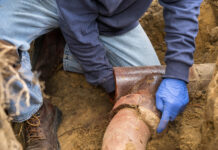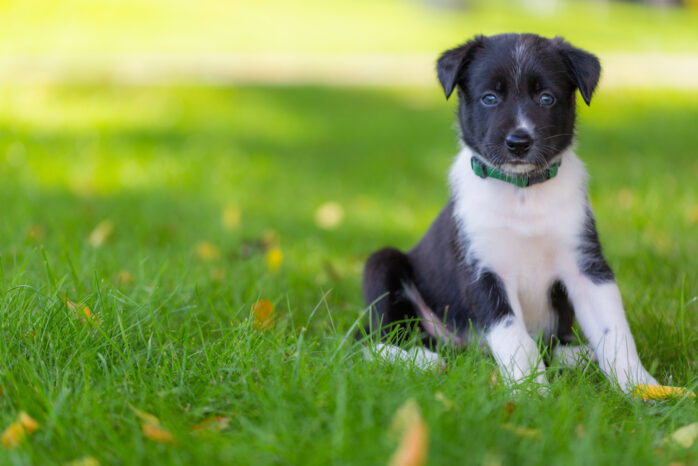
When you find the perfect new puppy to be part of your family, your life will be fun, exciting, and sometimes a little crazy. Most new pet parents research caring for a new puppy or talk to their vet before bringing their puppy home. Puppies have tons of energy and are very curious about their new surroundings. First-time puppy owners may be surprised at what their fur babies can get into. It’s essential for a dog owner to thoroughly puppy-proof your home and puppy backyard. You can find excellent suggestions to create a puppy proof backyard here: thepamperedpup.com.
1. Install Fencing Around Your Yard
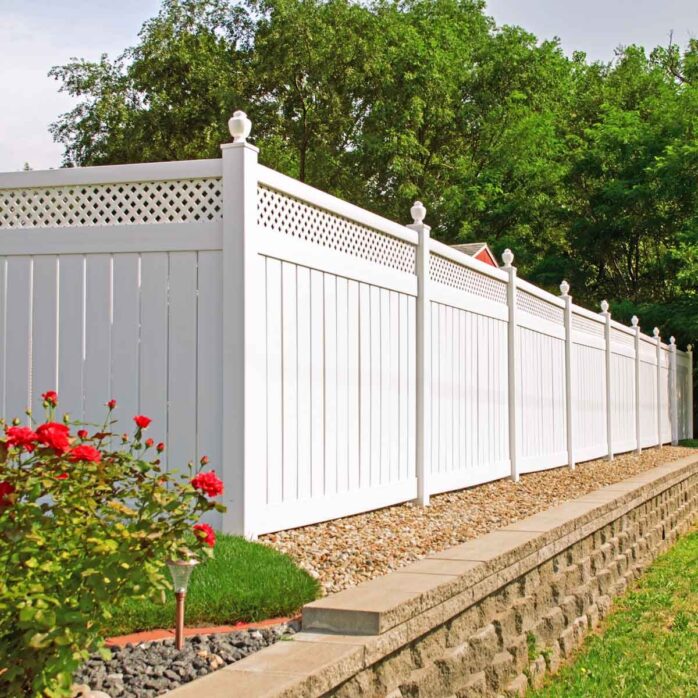
When you put up fencing around your yard, it should be high enough so your dog can’t jump over the top. The fencing should have plenty of reinforcement along the bottom section. Puppies are adept at escaping and can be very clever at finding a way to get out. The fence should be constructed of sturdy materials.
One way to create a puppy-proof yard is with electric fencing. A wireless containment system can create a boundary that keeps dogs safe and away from hazards outdoors. Electric fencing systems allow dog owners to create custom areas around your property so puppies and older dogs are safe and can’t wander out of bounds. Electric fencing systems offer several geo-fencing systems to create safe spaces at home or anywhere you and your pup go for walks or hikes.
2. Put Up Fencing Around In-Ground Pools
Swimming pools can be a significant hazard for children and puppies. Sturdy fencing encircles your swimming pool to prevent your puppy from falling into the water. You can work with your puppy or have a professional trainer teach your dog to be safe around the pool.
3. Barricade The Area Vehicles Back In And Out
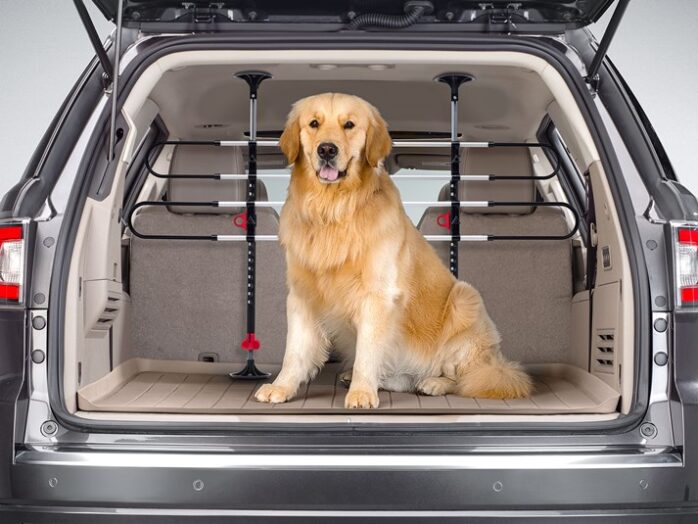
Dogs love being with their owners and will run to greet you when they see your car come into the driveway. It’s lovely to experience so much love and devotion from your furbaby. However, you always want to take the necessary precautions to keep your pup safe. If you have a garage your dog can access from your backyard, it’s a good idea to make sure you barricade the open garage door, so your pup doesn’t run into the driveway.
4. Discourage Predators From Getting Into Your Yard
You can easily discourage predators from getting into your yard by keeping your grass mowed down. Pick up twigs, brush, and any materials predators could hide in. Allowing your yard to get overgrown encourages predators, rodents, and snakes to create a habitat. You can make aviaries and poultry pens safe by snake-proofing them. Dogs can suffer from snakebites that can potentially be life-threatening. Here are some helpful tips:
Snakes will get into any available spot that’s cool to avoid the hottest part of the day. They like to hide under houses, in leaf piles, under shrubbery, and in piles of rocks or wood.
Cane toads love being around places where there’s a water source. It’s a good idea to keep an in-ground pool or even kid’s wading pools fenced in. Unless it’s necessary, you should feed your pets inside your house. Toads are fond of pet food. A good suggestion is to have a dog door to your fenced-in yard. Your dog can go in and out as it pleases. Keeping your grass cut low will discourage toads from hanging around.
Ticks and other insects, including some poisonous spiders, crawl onto twigs or bits of grass and attach themselves to people and pets. Using a form of flea and tick control on your dog can help to keep it safe.
5. Keep Your Yard Clean And Free Of Hazards
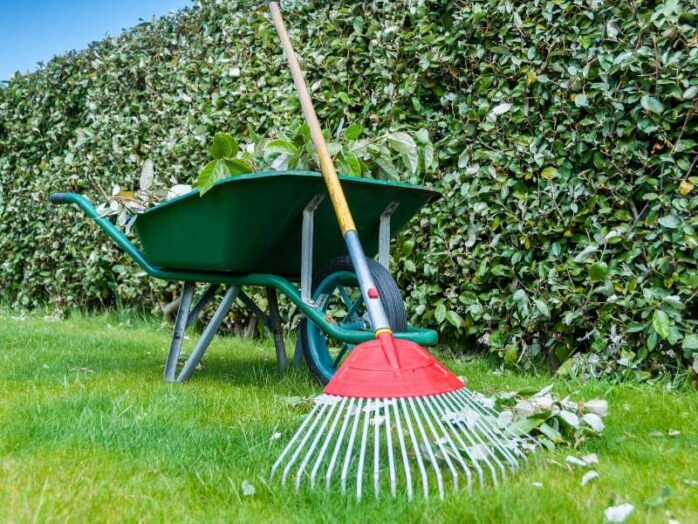
You can prevent pedators from creating a habitat on your property by keeping the grass cut, shrubs and trees trimmed, and keeping sheds or garages clean and free from clutter. Some berries, nuts, and seeds could be hazardous if your dog decides to snack on them. Fruit from your trees and nuts could be tempting to your pup and should be kept cleaned up.
When your dog takes a potty beak outside, it’s essential to clean up immediately to avoid upset tummies. Fertilizers, composting materials, mulch, and pesticides can make a dog sick and potentially be poisonous, These items should always be kept in an enclosed space and out of your dog’s reach.
6. Provide Shelter And Shade
Most dogs love to be outdoors, especially in the warm weather. Your dog should always have sufficient protection from the sun and shady spots to relax in. Remember that as the sun moves during the day, so do your dog’s shady places. Make sure there’s always plenty of shade in your yard. It would be best if you always had plenty of fresh, clean water for your dog to drink.
A few bowls of water in shady spots in your yard ensure your pup stays hydrated. Dogs should be inside during extreme weather conditions, especially very hot or cold weather. If your pup likes being outdoors most of the time, you should have adequate shelter for protection from rain or windy conditions. A well-constructed doghouse or an insulated dogloo can do the job.
7. Get Rid Of Toxic Plants
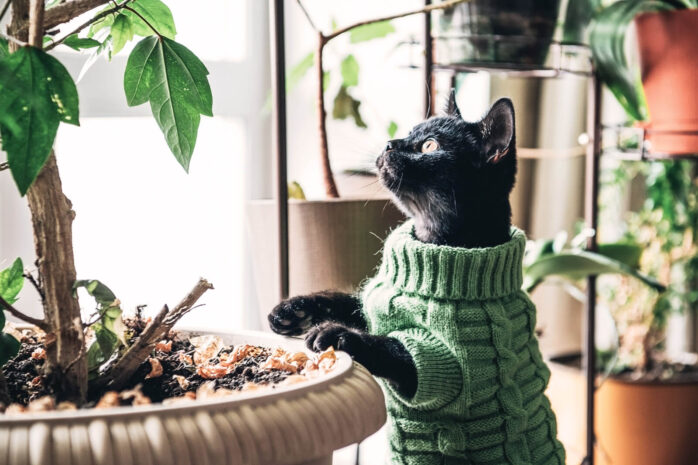
Some of the most beautiful plants and flowers can adorn your yard and turn it into a beautiful space. However, before you bring a new puppy home, it’s a good idea to find out which flowers and plants are toxic to dogs. A Puppy has no idea what’s harmful and it’s up to the owner to keep it safe. Among the plants and flowers that are poisonous to dogs are Azaleas, Buttercups, Rhododendrons, Hibiscus, Gardenias, Gladiolas, Primroses, and Mums. You can check pet poison control websites to get a complete list of plants and flowers that are dangerous to your pup.
8. Always Supervise Your Puppy
When your puppy goes outside it should always be supervised. Puppies and even older dogs can get into trouble quickly if they don’t have supervision. Your puppy could ingest something that would make it sick or get too curious about an insect and get bitten. You should also be aware of neighbors’ pets that could get into your yard.
9. Check Fence Latches And Gates
Before your new puppy goest outside you should always check the gates and fence latches to make sure they’re secure and latched properly. A gate could accidentally get left open and you may not know until you have to chase after your puppy. It’s always best to err on the side of caution.


